Making a great listening environment isn’t about soundproofing alone, sometimes getting a sound diffuser would give the best results. But most people don’t understand the concept behind diffusing sounds and how they can help create a rich, sonic experience.
In this article, we will dive deeply into understanding what sound diffusers are for and whether it is right for your home theater.

What Is A Sound Diffuser?
Before we explain what sound diffusers are, you need to understand some mechanics of sound and how they work. Although sound and light have many different properties, they do share a similar concept when it comes to diffusion.
One such example is pointing a light beam at a disco ball – the different angled piece of glass would reflect the light into different directions. In a similar vein, the sound diffuser makes use of different depth and angles to scatter various sound frequencies in all directions.
Sound diffusion has great importance to a room. It gives a 3D openness making it easy to appreciate different beats and sounds. When used with other absorption panels to treat concert halls, band rooms, and home theaters, it makes music more lively and open.
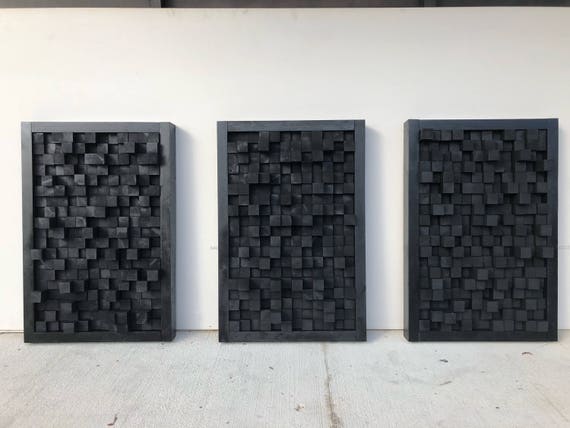
How Do Sound Diffusers Work?
Sound diffusers are made with soft material that has plenty of air pockets preventing the bounce-back of sound waves. They are usually in rectangular or square installations. Sound diffusers are made of wood. How does a sound diffuser make the sound quality better? Let’s find out.
Depth and angles of the panel are used to distribute sound waves in different directions. The wells or shapes on the diffuser (these parts include the height, angles, and depths of the panel), impact the sound frequency available for diffusion.
The benefits of using sound diffusers are to disperse sound waves evenly, without eliminating the sound waves that are directed at them. To completely enjoy sound diffusers, make sure the wells are symmetrical. The well patterns make the diffusers look like art installations.

Types Of Sound Diffusers
The type of listening environment you want determines the type of diffusers you would get. What diffuser is the right fit for you? Let’s find out here.
Decorative Diffusers
Decorative diffusers are the most popular option in the market. They have the capacity of scattering frequencies up to 300 Hz to 5,000 Hz. Check the sound frequency of your home, if it is within the above range then, decorative diffusers might be a great fit. These diffusers are mostly advertised by the companies as diffusion acoustic panels or sound absorption panels.
Decorative diffusers have a laminated front with a design cut out made with foam so that the sound waves can pass through the foam center. The diffusers are mostly 19.72 inches square with a thickness of just over 2 inches. You might need something stronger than pins to weigh it down due to the weight.
Decorative diffusers have an NRC (Noise reduction coefficient) rating. They are scored based on the ability to absorb straying frequencies on a scale of 0 to 1. Most decorative diffusers have a rating between 0.52 to 0.75, which means that they can absorb up to 52% to 75% or frequencies.
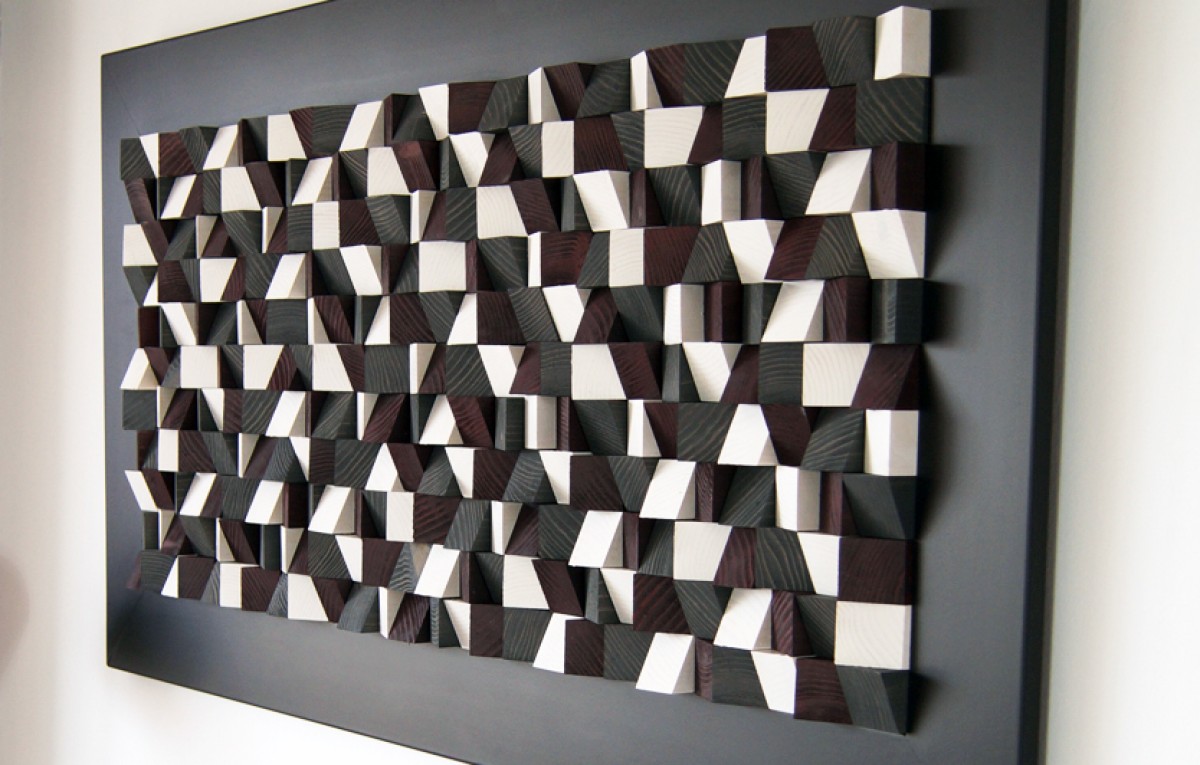
Baffles
Baffles are originally used in acoustics to prevent the blockage of sound waves, allowing them to move freely. Baffles come in different meanings, they can be regarded as a device that blocks the sound that blocks the sound of the exhaust gas or panels that eliminates echo in a large room.
Baffles are basic sound diffusers, they come in a simple design unlike decorative diffusers and they are also on the cheap side. They work great for eliminating noise in a regular setting, but it is not recommended for professional use or audio setup. Investing in a more expensive diffuser would give you the listening experience you want.
The price of baffles affected the design and quality. At first glance, it looks plain and they are made with Polyvinyl Chloride (PVC) instead of wood. It is also lighter than the others due to the thermoplastic that is created in a way that the back of the diffuser is hollow. Mounting baffles is easy, you can use velcro, tape, or pushpins.

Quadratic Residue Diffusers
Quadratic diffusers are created to spread sounds at different frequencies evenly around the room. It is a series of troughs and wells that are in different depths. The well width is based on the half-wavelength and the depth is based on the quarter wavelength calculations. A quadratic diffuser can diffuse sound waves of frequencies from 100 Hz up to 4000 Hz and more.
They have the ability to diffuse energy up to 3 inches deep within the deepest well which can go down the 100 cycle range. When choosing the best quadratic diffusers, you have to ensure you control space issues if your room is smaller. You will have to control this variable by choosing a diffuser with a low prime number.

Skyline Diffusers
Sound waves are reflected directly to the sound source when using parallel walls, this is the most common issue with standing waves. When two waves travel in different directions and they eventually collide, the result might be a dip or boost in the frequency bands and harmonic distortion.
Sound diffusers break sound waves when it is reflecting on them, thereby stopping unwanted sonic sounds and standing waves. These diffusers are made from materials that help reflect sound. Skyline diffusers are two-dimensional diffusers.
Two-dimensional diffusers allow sound waves to be distributed in 360 degrees horizontally and vertically. The best diffusers for a small room are two-dimensional diffusers as they allow sound waves to be distributed in different forms.
One-dimensional diffusers on the other hand make sound waves fully before reaching the diffuser. If the room is small, you might not notice the effect of one-dimensional diffusers because the space is not enough for sound waves to fully form.
There is a limitation to using two-dimensional diffusers though, the rate at which they minimize reflections and localizations is low. The position of a skyline diffuser depends on the size, purpose, and position of the listening setup. Generally, Sound diffusers are placed at the primary reflective points in the room.
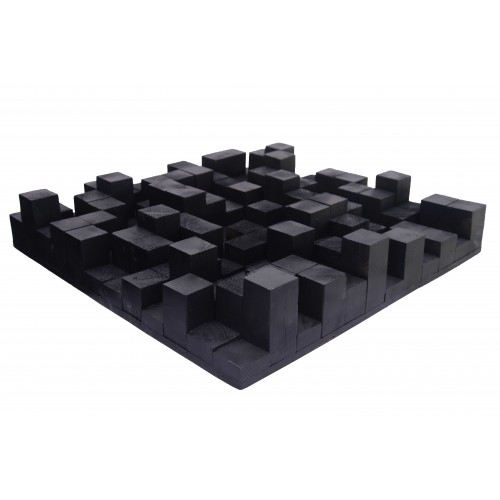
Let’s say your room is pretty symmetrical and you have your desk on the equal side of the room. If your monitors are present in the room, the points of reflection would be at the sides of your monitor and the back of the wall. You might notice the reflections as they create a distorting, audible echo and comb filtering of the original signal.
The best place to put the diffuser is where it is middle in line with your computer monitors. Panels at this height would make sure the monitors are the sound produced is equal to your ears. If your room has high ceilings then the best place to put the skyline diffuser is above you.
Even though the easiest solution to fix acoustics issues in a small room is absorption, there might still be audio issues that you do not want. Using a diffuser would give your room the extra life that is needed.
Fiberglass Acoustic Diffuser
Fiberglass diffuser has been around for years and it is one of the most popular choices since it is affordable. It is very easy to install and can be found in most hardware stores. They are made from a material that looks like a sponge, an open-cell material.
When sound waves hit the fiberglass acoustics diffuser, it absorbs and releases the sound waves and create a diffusion through absorption. The sound quality from the fiberglass will absorb the quality of the sound after diffusion.
Barrel Sound Diffuser
This is the most used sound diffuser panel found in most recording studios around the world. They are designed to have an inner core and an outer barrel. These parts are used to divide sound waves and distribute them in an arc of 90-degrees. This effect would reduce comb filtering, flutter echo, and the most important, standing waves.
Barrel Sound Diffuser has two sheets of plywood having a space in between. This space is filled with materials that allow reflection easier. The other side acts as a barrier, to prevent audio from escaping the panel. Barrel sound diffusers have the ability to put all the sound waves in one area while blocking all the reflections in other areas.
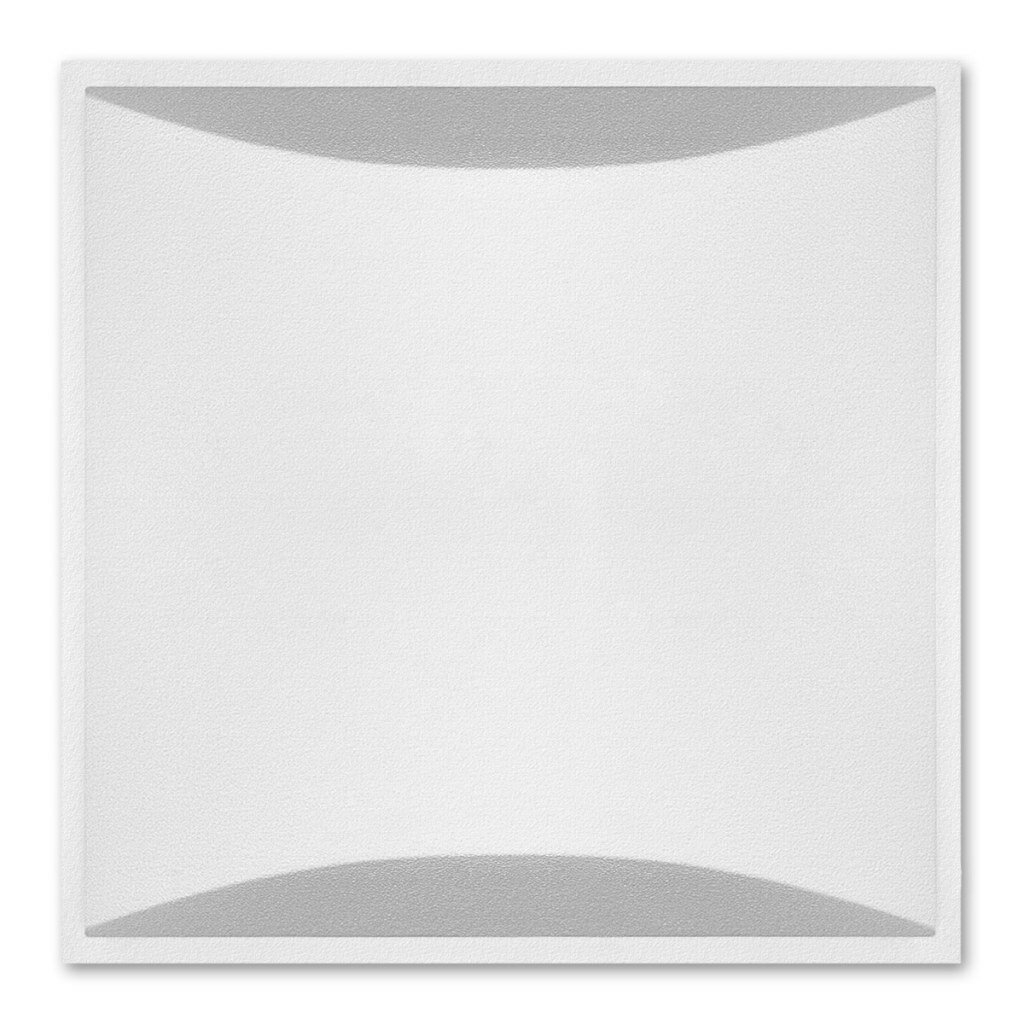
Which One Is Best For You? Sound Diffuser or Absorber
A sound absorber and a diffuser can be used to control the acoustics of a room, however, these processes are done in different ways. They work through different mechanisms but their results are quantitatively different, they can be used to create a fine balance of sound.
What sound diffusers do is divide and distribute sound waves into smaller ones to create sound waves that have less energy than the original. Sound absorbers absorb sound waves that come into their range of field and tend to lower reverberation time.
Both devices can be used in multi-room setups, home theatres, and drum rooms to create a full-listening environment. Adding a sound diffuser or acoustics to your room would deliver a great listening experience. But, depending on how well you want your audio to sound, you might want to get both panels.
Let’s say you have a small room that prolongs sound and resonance, a sound diffuser would spread out all the reflections in the room. A diffuser would also work well in a large room with natural sound.
Using diffusers in recording studios is very important. You do not want the mic to pick up echoing sounds.
Best Sound Diffusers To Buy
BXI Sound Diffuser
Also an example of a quadratic residue diffuser. This diffusion panel reduces sound defects in the studio. It is very easy to set up and install. The panel is made with high-quality wood and it spreads sound waves in frequency ranges of 544 Hz to 24.5 KHz.
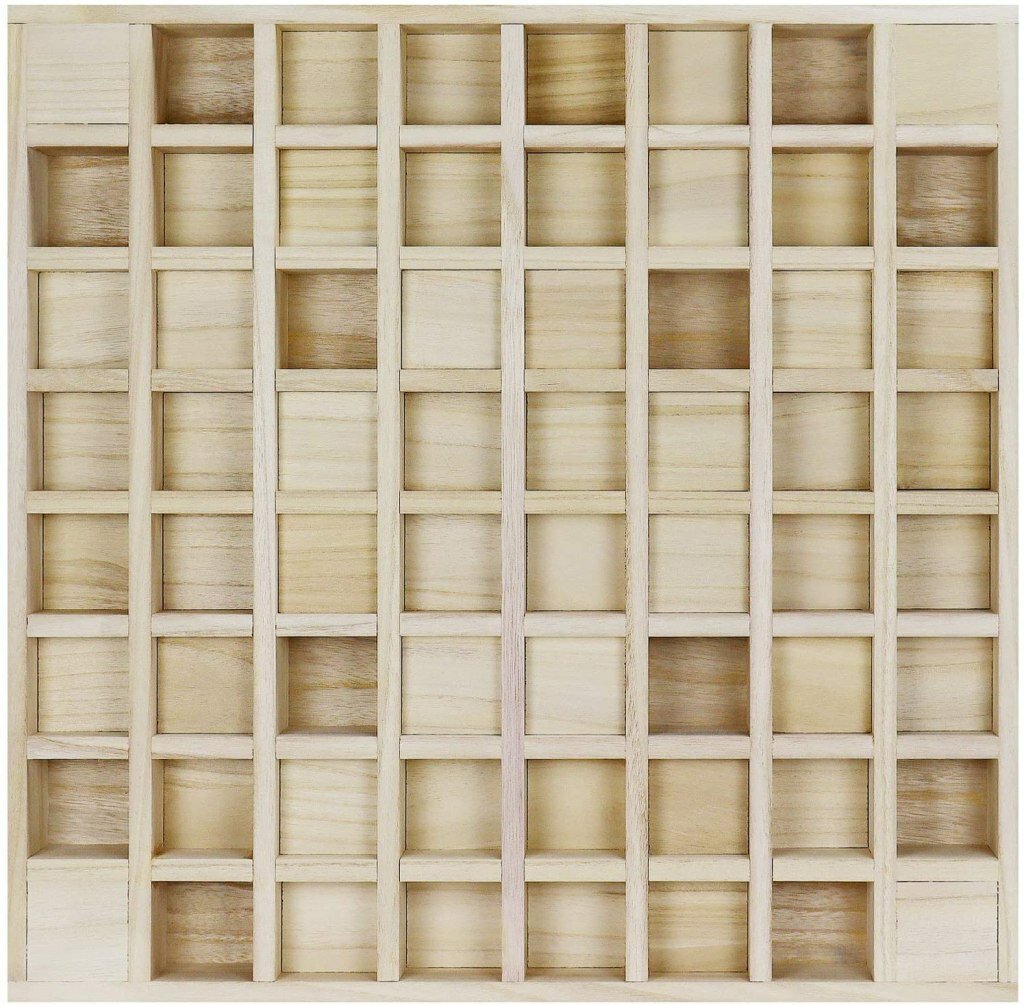
Features
- Specifications: 24 x24x 28 inches, four square feet.
- Weight – 9.3 pounds
- Material- wood
- Resistant to corrosion
- Reduces fluttering sounds and echoes
- Equal distribution of sonic resonances
- Scatters sound two-dimensionally ( a 2d Quadratic residue diffuser)
- Diffuses frequencies of up to 410 Hz to 24571Hz
- Easy to mount, can be pinned with anchor screws or sawtooth picture hanger
The BXI sound diffuser is made with high-quality wood. The panel adds a sense of uniformity by effectively distributing sound energy to remove acoustics defects like fluttering echoes.
TroyStudio Acoustic Diffuser Panel
If you’re looking for a cheaper, lighter-weight option, then the Troy Studio Acoustic diffuser is the best fit. It might be as aesthetically pleasing as the wooden diffuser, however, it might get the job done.
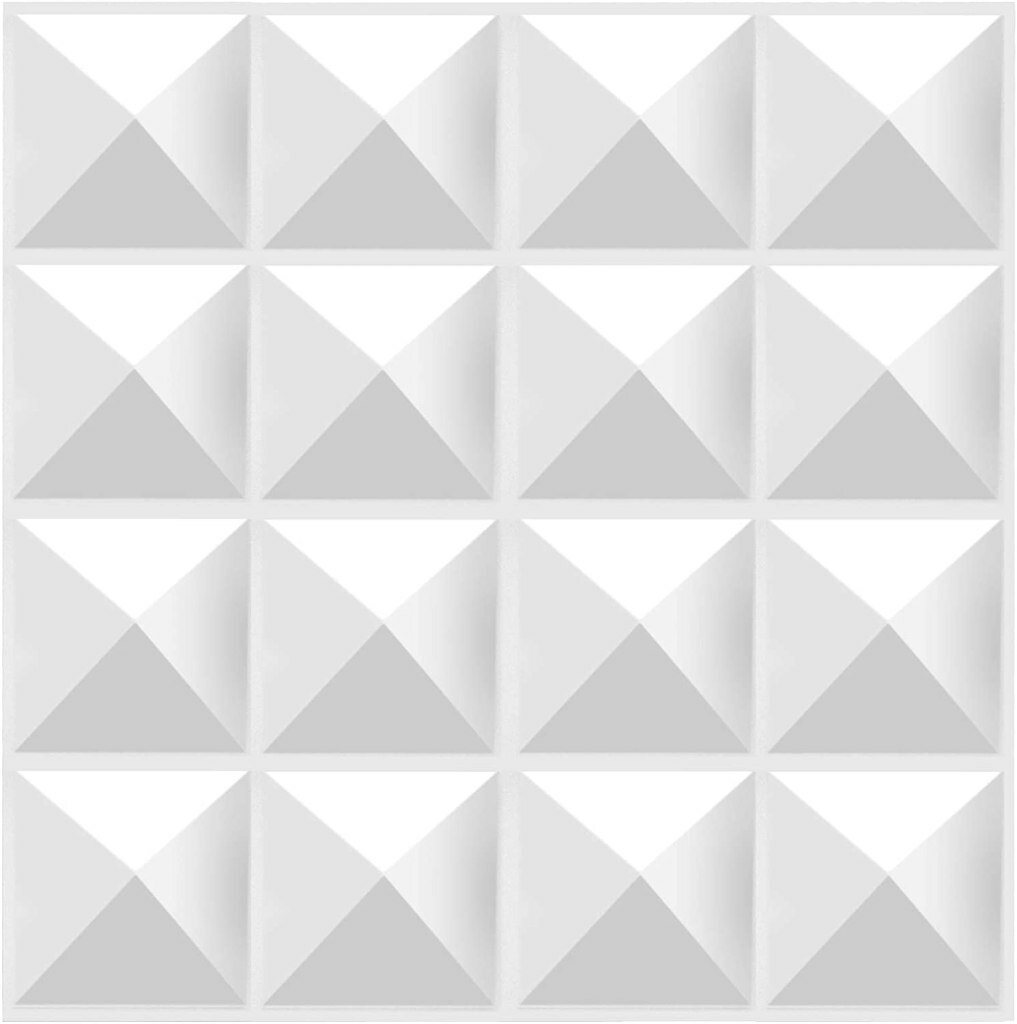
Features
- Size: 12 x 12 x 1
- Material- PVC
- Diffusion: It creates a more balanced sound profile to ensure high-quality sound details
- Great acoustic treatment: The acoustic tiles are good for treating acoustic issues like acoustics focusing, comb filtering, response cancellations, and vocal clarity. It can be used to record audio in the room, home theater, or office.
- Design: It is made with an elegant matte design and special geometric patterns making it ideal for wall decoration.
- Easy Installation: The Troy studio acoustic diffuser panel is very easy to mount. It can be pinned with a 3M spray adhesive.
Conclusion
When fixing up your home theater, it is inevitable that you would be dealing with different audio sources. It could be best to place the diffuser at the wall in the back of the ceiling and room. If it is your recording studio that you are setting up, place the diffuser at the rear wall.
You can also add sound absorbers to the sides so that runway speaker sounds can be picked easily. Ultimately, sound diffusers are an often-overlooked item when building your home theater. However, their effects can be impressive by helping to evenly distribute sound and make a smaller room seem larger.
You may also be interested in:
- Best Home Theater Room Sizes
- Best 7.1 Home Theater Systems
- Bookshelf Vs. Tower Speakers – Which To Choose?
